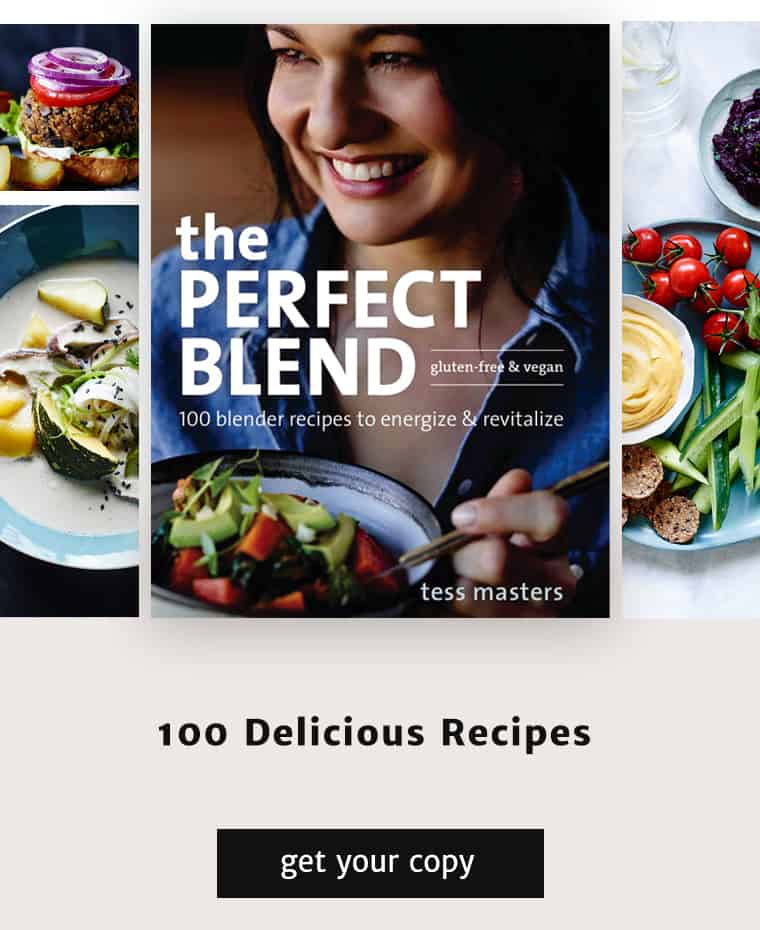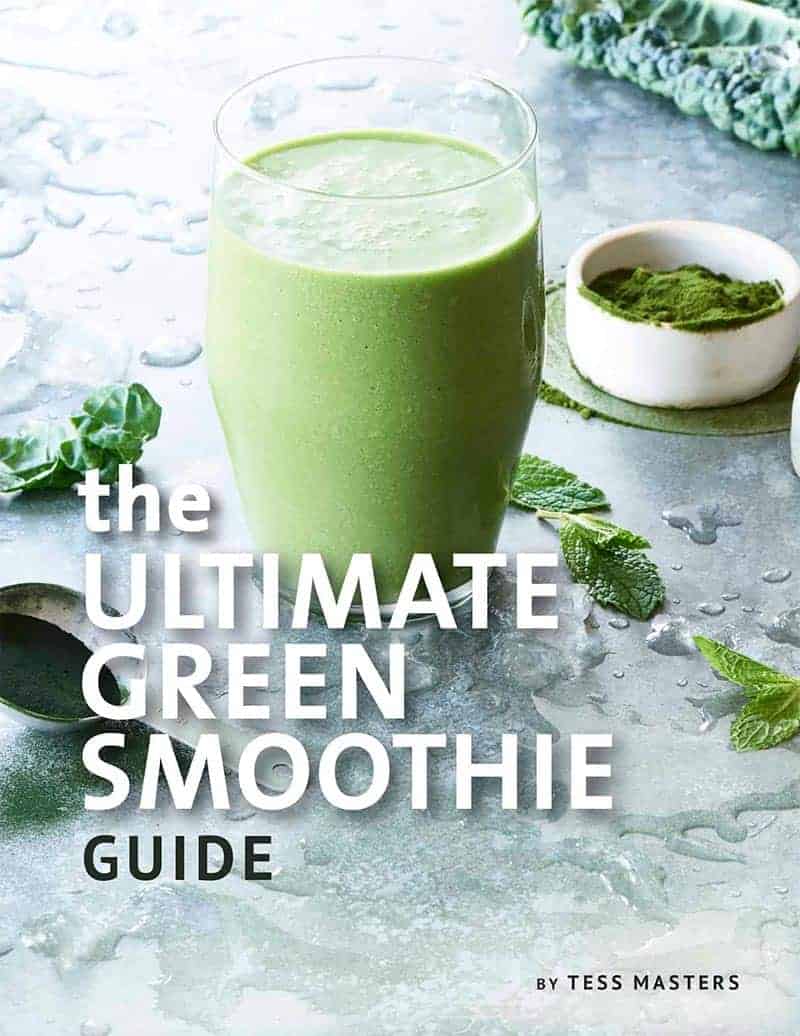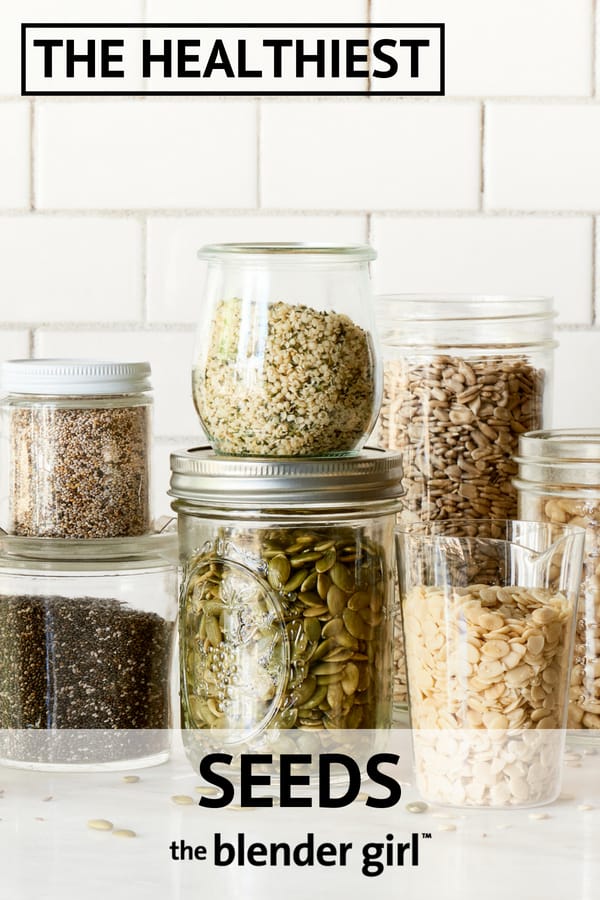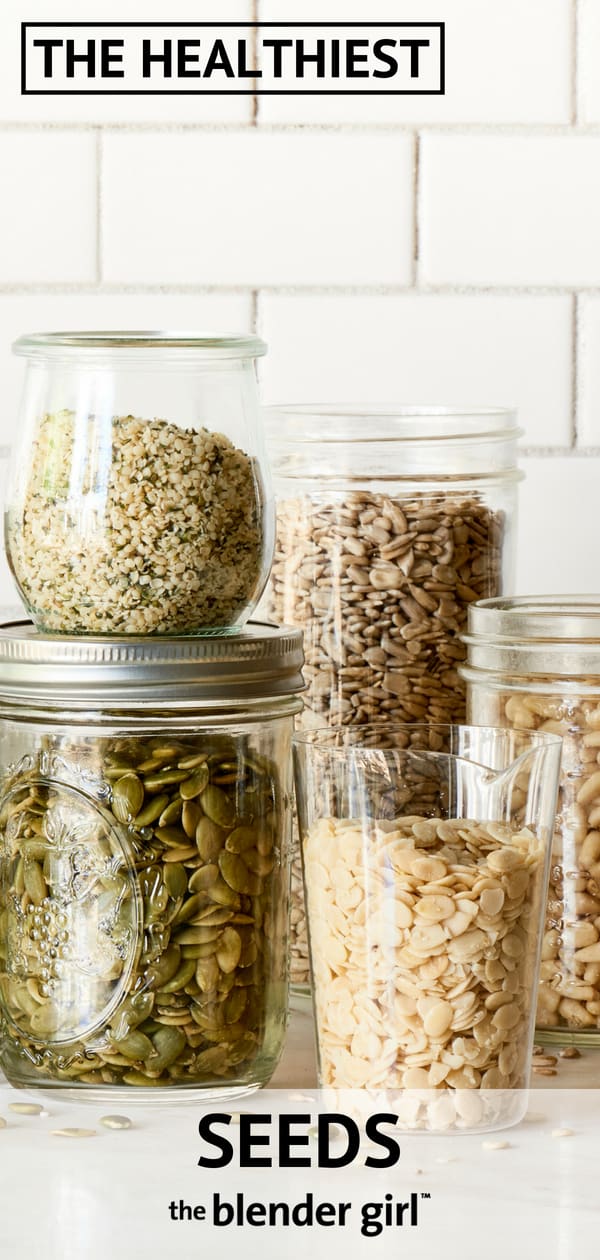Seeds
Tips for selecting, storing, and using chia seeds, hemp seeds, flax seeds, pumpkin seeds, sesame seeds, and more to create healthy recipes.
Raw Seeds
Seeds are a fantastic additions to all kinds of recipes bringing a crunchy texture and gorgeous flavor to dishes, as well as offering protein, healthy fats, vitamins, minerals, and fiber.
Add seeds to salads, stir-fries, stews, and curries; making seed milk or seed butter; add to dips, spreads, creams, and sauces; enrich baked goods, pancakes, and waffles; blend them into soups; use them to binding slices and protein; add them to burgers and veggie patties; stir them into yogurt; add to cereal or fruit; add to trail mix; or just enjoy them by the handful for a quick easy snack.
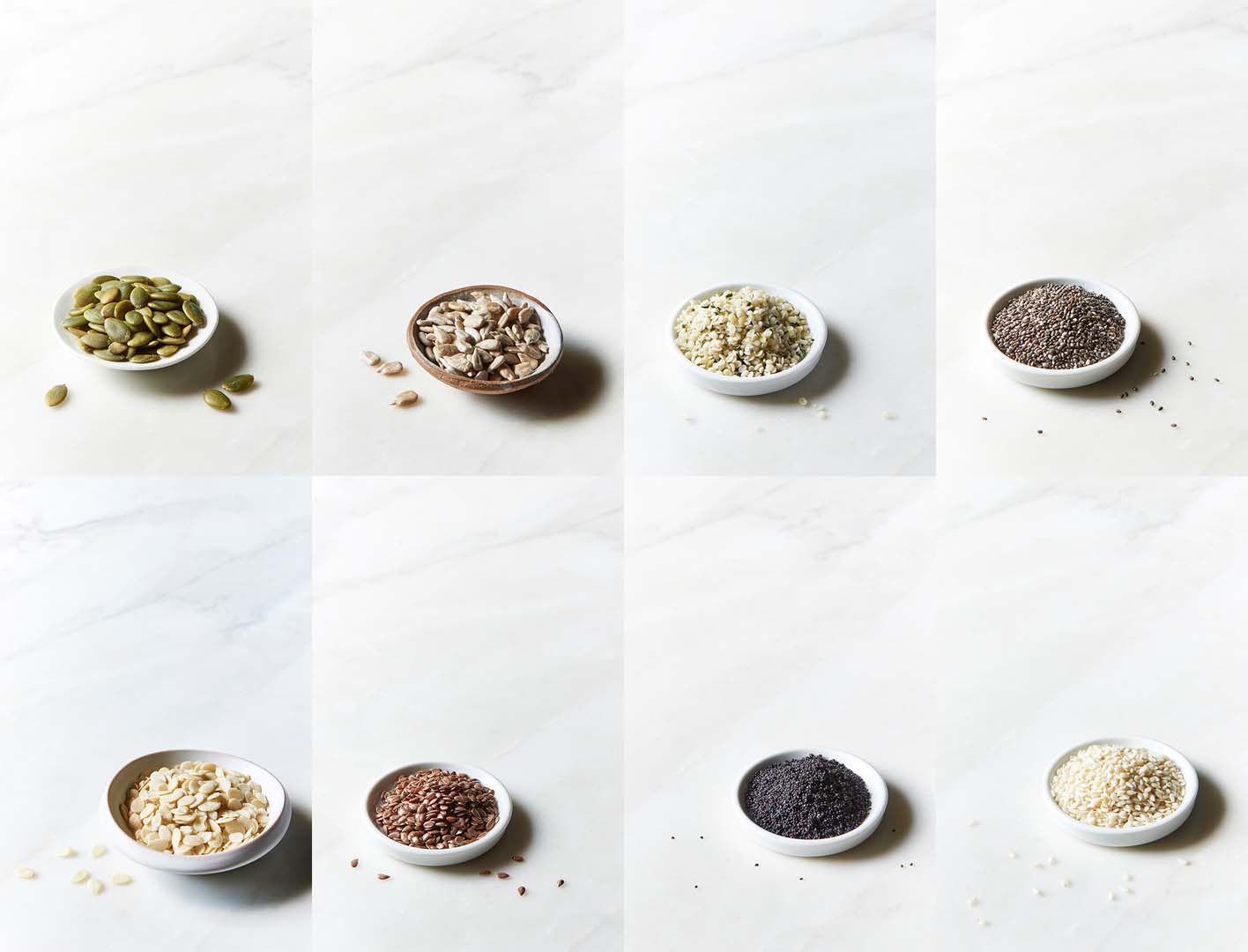
The health benefits of seeds
Raw seeds are loaded with protein, fiber, vitamins, minerals, and healthy fats, and are known to help lower blood pressure, cholesterol, assist with heart health, bone density, regulate blood sugar levels, and hormone levels.
With powerful antioxidant and anti-inflammatory properties, raw seeds can also help combat free radical damage and promote cellular renewal.
These raw seeds also assist with colon health and promote detox and the elimination of toxins.
How to select raw seeds
Purchase raw seeds from a health food store or online source with a high turnover to ensure maximum freshness and quality.
The fat content and the delicate nature of the raw oils makes seeds highly susceptible to rancidity.
Purchase raw seeds from a health food store or online retailer with a high turnover to ensure maximum freshness and quality.
I don't recommend purchasing seeds from bulk bins as these seeds have been exposed to a lot of oxygen, as well as bacteria from handlers and other shoppers.
Soaking seeds
Seeds contain anti-nutrients that can cause digestive issues.
Soak seeds to neutralize enzyme inhibitors, activate digestive enzymes, unlock the full nutrient potential of the nut, and refine the texture for culinary purposes.
Learn more about the reasons for soaking seeds and how to soak them for health and cooking here.
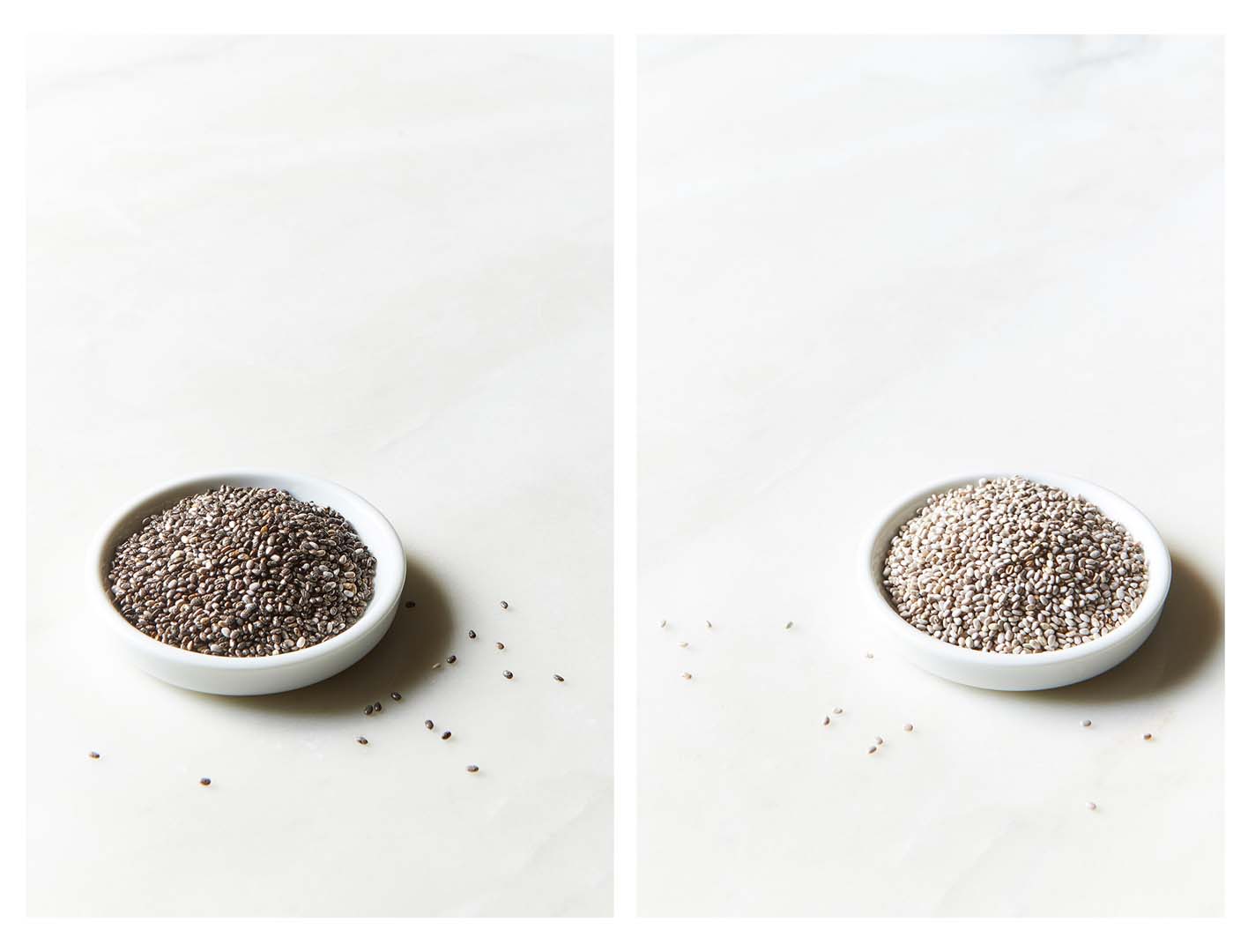
Chia Seeds
These grain-like seeds are harvested from the Savia Hispanica plant which is related to mint. Chia has been revered for centuries as a complete superfood. It was so valuable in ancient civilizations that it was used as currency.
This wonder food was a staple in the diet of the Aztecs and the Mayans, and has gradually gained momentum in the natural health community since the 1990’s. for its superior nutritional profile and incredible culinary versatility.
Chia is whole grown containing all components of the grain — bran, germ and endosperm. It is grown in central and south America and is available in three major varieties – black, white or mixed.
These super seeds are one of the highest plant-based sources of omega 3 fatty acids, protein and fiber. The protein has a complete amino acid profile, which is easily utilized by the body; the omega 3 to omega 6 ratio is extremely well balanced at 3:2; and the fibre is soluble.
Chia is also a rich source of calcium, containing more than the same weight of dairy milk; three times more iron than spinach; fifteen times more magnesium than broccoli; and a truckload of antioxidants. It also increases endurance.
These tiny seeds have a mild nutty flavor that does not alter the flavor of dishes and is very easily digested. It can be eaten raw – sprinkled or crushed over cereals, salads, stir-fries, curries and soups; or prepared in numerous ways for a variety of dishes. It makes a fantastic nutritious porridge; a wonderful binder for burgers, patties, slices and power bars; and is a phenomenal way to enrich baked goods and smoothies. Chia sprouts are also incredibly tasty for use in salads, wraps, sandwiches and stir-fries.
Chia can also be used as a gel. The seeds are highly absorbent and develop a highly gelatinous quality when soaked in water or juice. The seeds absorb up to nine times their weight in liquid. Whisk about 1 tablespoon of chia seeds into 1 cup of liquid and store in a sealed glass jar in the fridge for about a week. This gel can be added to smoothies, soups, sauces and desserts.
This gel-like quality assists the body with retaining fluids and electrolytes, and helps to lower the glycemic index of foods by slowing down the conversion of complex carbohydrates to sugar. It has also been shown to aid the absorption of calcium and assist in muscle and tissue building; and bulks up food in the colon helping with cleansing and elimination.
Chia gel also helps to boost the nutritional profile of all of your favorite foods. Chia gel increases the vitamin and mineral levels, adds protein and omega fatty acids, and promotes weight loss. I make up a batch every few days!
Try adding chia seeds to coconut water and juice to make an energizing workout drinks or use chia seeds to thicken raw jam.
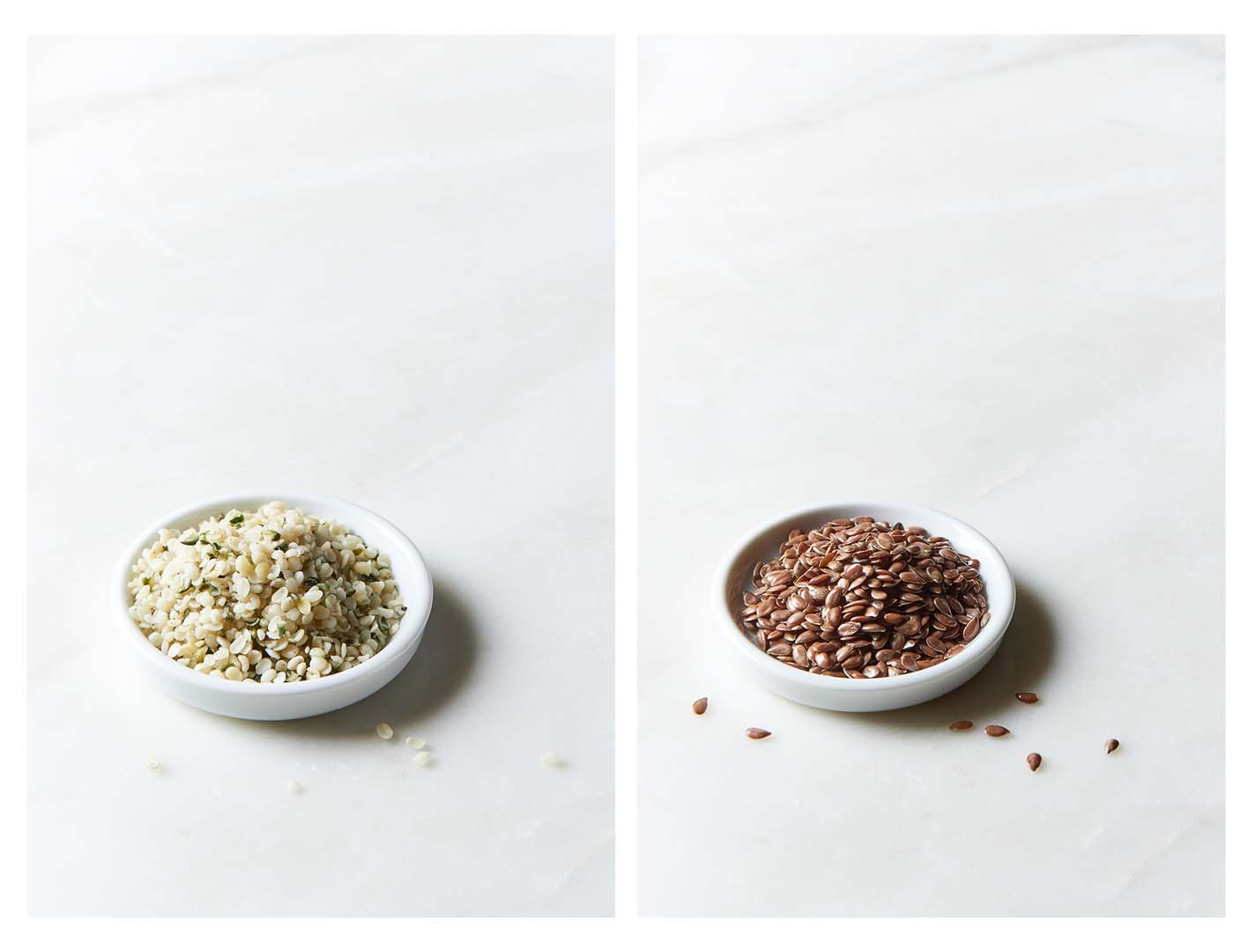
Hemp Seeds
This wonder seed is an incredibly powerful food, and I highly recommend including it in your weekly diet in any way possible.
Hemp comes in four forms: hemp seeds, hemp protein powder, hemp oil, and hemp milk.
Hemp seeds are extremely rich in vitamins, minerals, healthy plant based fats, antioxidants, fiber, live enzymes, and natural chlorophyll. Hemp is also an amazing source of omega 3 and omega 6 fatty essential fatty acids, and contains powerful anti-inflammatory properties, which helps to repair tissues, particularly after exercise.
Hemp seeds also contain complete protein — containing all 10 essential amino acids. In fact, the amino acid, Edestin is present only in hemp. This amino acid is considered integral to our DNA. Hemp is considered the closest plant based source of protein to our own human amino acid profile.
Not only is hemp protein of excellent quality, it is highly digestible. It is very easily absorbed by the body, not requiring much energy, which leaves more available for muscle regeneration and fat metabolism.
Hemp protein powder is produced by pressing the raw hemp seeds, and then milling this “flour” even more finely to remove some of the starch. Hemp protein powder makes a wonderful addition to smoothies, desserts, salads, or on top of soups.
Hemp oil is pressed hemp seeds. This oil is incredibly delicate, and needs to be refrigerated, and once opened, consumed quite quickly to reap the full benefits. Just a tablespoon added to smoothies every day is extremely beneficial. Hemp oil should never be heated. Always consume raw.
Organic hemp milk, hemp protein powder, and hemp oil do not contain any THC (tetrahydrocannabinol) found in marijuana and are perfectly safe and legal.
Always purchase organic hemp seeds from a health food store or online retailer with a high turnover. Just with other raw nuts and seeds, the valuable oils are highly susceptible to rancidity, and should always be placed in the fridge, and consumed relatively quickly.
Flax Seeds
Flaxseeds, or linseeds (as they are known in Australia and New Zealand) come from the flowers of the flax plant and can be found whole, ground into meal, or pressed into oil. Flaxseeds look like little flat beads that are a little bit larger than sesame seeds. They have a smooth shiny appearance that is either reddish brown or amber depending on whether they are a golden or brown variety.
These little seeds may be tiny, but they pack a huge nutritional punch. Consuming raw ground flaxseeds (which makes them more available to the body) is one the best things you can do for your health. Raw flax meal is a fantastic source of essential omega fatty acids 3, 6 and 9 which have been linked to decreasing the risk of heart disease and cancer and combating inflammation.
Flax seeds are a phenomenal source of fiber – both soluble and insoluble, which helps aid digestion and colon health; lower blood pressure and cholesterol; and stabilize blood sugar levels assisting with diabetes. They are also a good source of most of the B Vitamins, magnesium and manganese. Linseeds are also high in phtyochemicals, including powerful antioxidants.
These super seeds are one of the richest sources of lignans that convert to substances that help balance female hormone levels in the body. Studies have shown this to prevent breast cancer, reduce menopausal symptoms, and increase fertility.
Flax seed oils are very unstable and should never be heated. Always store flaxseeds in a glass air-tight container in the fridge and try to purchase as fresh as possible from a health food store with a high turnover. I like to look for stores that keep the flaxseeds, flax meal and oil in the fridge.
I don’t purchase pre-ground flax meal as I don’t know how long it has been sitting in the store bins. I prefer to purchase whole flaxseeds, which have a longer shelf life, and grind my own. I use a spice or coffee grinder.
You need to grind flaxseeds in order to make the nutrients available and easily absorbed. Otherwise, they just pass through the body under-utilized. Flaxseed oil is touted as a wonderful nutritional supplement and does have enormous health benefits. However, it does not contain the phytochemicals or fibre of the whole seeds. I prefer to grind the seeds and get the oil and all of the other goodies.
Flaxseeds have a subtle earthy nutty flavor, they are a wonderful way to enrich smoothies, baked goods, and raw desserts. They make a fantastic egg free binding agent in slices, bars, cakes, and desserts; and are great in breads. You can also just sprinkle the flax meal over fruit, yoghurt, ice cream, stir-fries, soups, salads, stews and casseroles. It is also one of the principle ingredients in LSA.
You will notice if I use flaxseeds in recipes, I will add it separately at the very end. This is because the soluble fiber in flaxseeds causes liquids thicken and if left sitting will alter the consistency of a batter or mixture. Stir it through or fold it in as close to baking as possible.
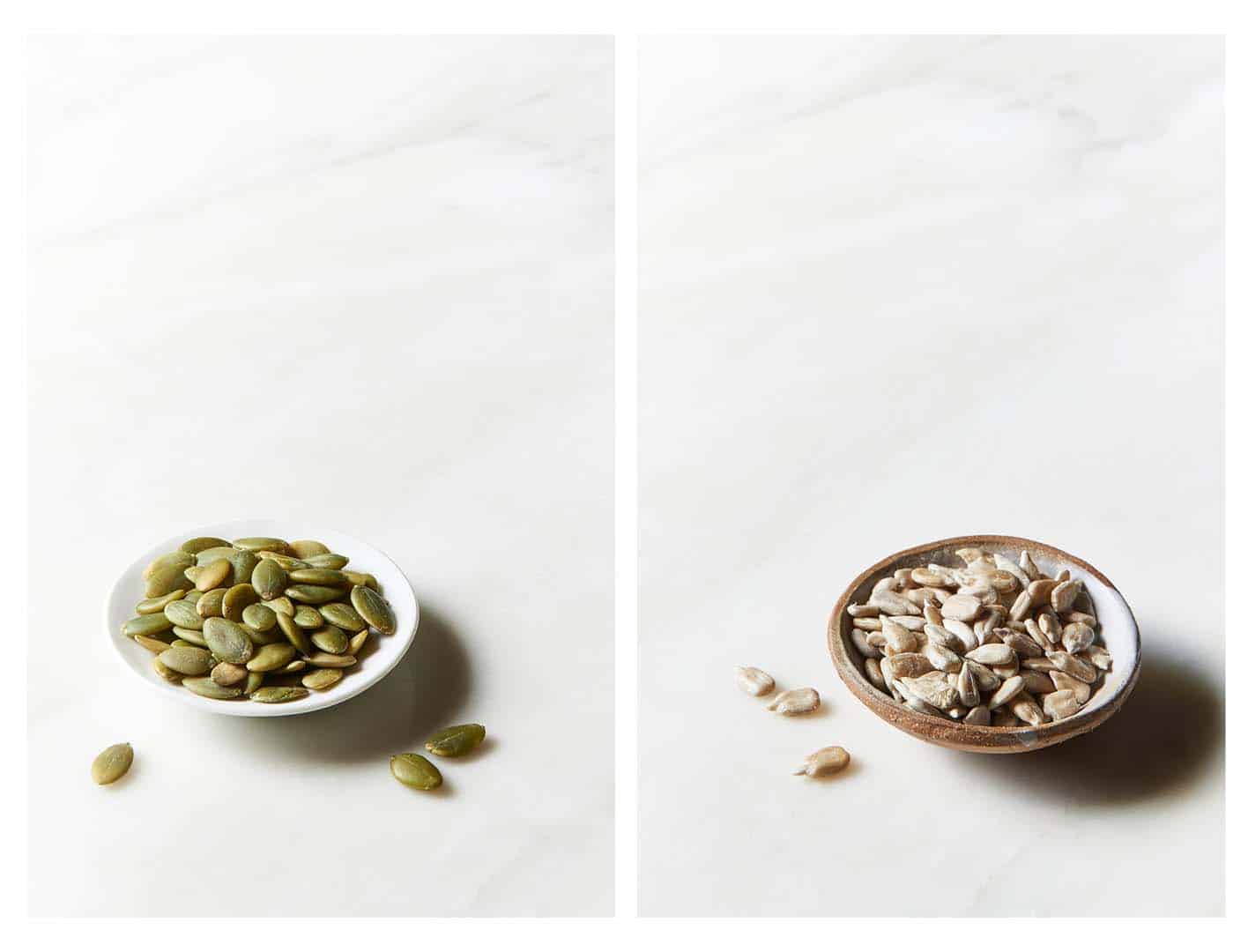
Sunflower Seeds
These sensational seeds are the fruit of the sunflower that is native to North America and was eaten by Native Americans for years.
Sunflower seeds are small flat beige kernels which are covered in a black or grey striped shell. They are available as whole in-shell seeds or de-hulled kernels. They have a mild nutty flavor and a tender texture that makes them a popular food in many countries.
The whole seeds are a popular snack food in the Mediterranean in places like Turkey and Israel, and are commonly used in recipes. However, in the West, we typically consume the pale, hulled seeds. These have been mechanically processed, but are still available in raw or roasted varieties.
I purchase sunflower seeds raw and soak and dehydrate them before consumption. They are a wonderful alkaline forming snack food that is loaded with nutrients, they are one of the principle ingredients in LSA, and can be used to make delicious home made sunflower seed butter as a wonderful nut-free alternative to conventional peanut and almond butters.
I always have a jar of raw sunflower seeds on hand in the fridge for a quick snack, or for use in salads, raw power bars, baked treats, smoothies, and soups. I love to sprinkle them on porridge and cereals, and they are a yummy way to enrich ice creams. You can also sprout sunflower seeds for use in salads, stir-fries and curries.
Besides being delicious, sunflower seeds are a good source of fiber, protein, essential fatty acids, Vitamins B, calcium, iron, zinc, magnesium, potassium, manganese and selenium. They contain large amounts of Vitamin E. In fact, ¼ cup takes care of ½ of the recommended daily requirement. They also contain significant amounts of tryptophan like pumpkin seeds and may help with depression and anxiety.
Sunflower seeds have been linked to lowering cholesterol, blood pressure and promoting heart health, as well as The Vitamin E provides antioxidant and anti-inflammatory benefits.
Sunflower seeds have a high oil content and are subject to rancidity. Always purchase from a health food store with a high turnover to ensure maximum freshness and quality, and store in a sealed glass container in the fridge.
Good news for those of you with food allergies, sunflower seeds are not a common food to cause allergies. But always be individually tested if you are aware of an existing nut allergy.
Pumpkin Seeds
Pepitas are the superfood seeds of the miraculous pumpkin, native to the Americas. Today the largest producers are the United States, Mexico, India and China. I have always said that pumpkin is the most underutilized food in the standard American diet. At least they make use of the nutrient-dense seeds!
Pumpkin seeds are a common ingredient in Latin American, Mexican and North American cuisines. As squash was one of the first domesticated plants in the Americas, there is a long history of enjoying pepitas dating back to the native Americans and ancient Aztec civilizations.
These incredible seeds are one of the highest natural sources of protein with all of the essential amino acids. A handful of pepitas makes up almost half the recommended daily allowance of protein. They are also a rich source of iron. One cup of pepitas as a snack takes care of almost half of the recommended daily allowance of iron.
Pepitas are also a good source of zinc, which has been linked to assisting with prostate health and bone density; and calcium, magnesium, manganese, potassium, phosphorus, and copper; as well as Vitamin A, B and E. They also contain heart-healthy unsaturated fats and essential fatty acids such as omega 3 and omega 6.
Pumpkin seeds have also been shown to lower cholesterol levels and assist with heart health; as well as combat arthritis with their anti-inflammatory properties. The high amount of tryptophan contained in pepitas has also prompted researchers to use it to help people suffering anxiety and depression.
Pumpkin seeds have a subtle sweet and nutty flavor and chewy texture. Some have a creamy husk But the majority of pepitas sold are flat and dark green in color. They are commonly sold roasted and salted or spiced for use as a snack. But I always purchase and consume them raw so I can soak them in order to preserve their delicate fats and oils, and the integrity of their nutritional profile.
I always have raw pumpkin seeds on hand for a quick power snack, along with raw almonds and sunflower seeds. I use them a lot to enrich raw power bars, slices, smoothies, puddings, and desserts; as well as throwing them in baked goods. They are fantastic in stir-fries, curries, casseroles and salads. As well as sprinkled on porridge and other cereals, puddings, yoghurts and custards. Try incorporating a mix of pumpkin seeds and almonds into your burgers.
Always purchase pumpkin seeds from a health food store with a high turn over to ensure maximum freshness and quality, and store in a sealed glass container in the fridge, and consume within a couple of months. You can easily makes your own by scooping them out of the pumpkins and then dehydrating them at a low temperature.
Good news for people with food sensitivities — pumpkin seeds are not a common allergenic food and contain less oxalates than other raw nuts and seeds.
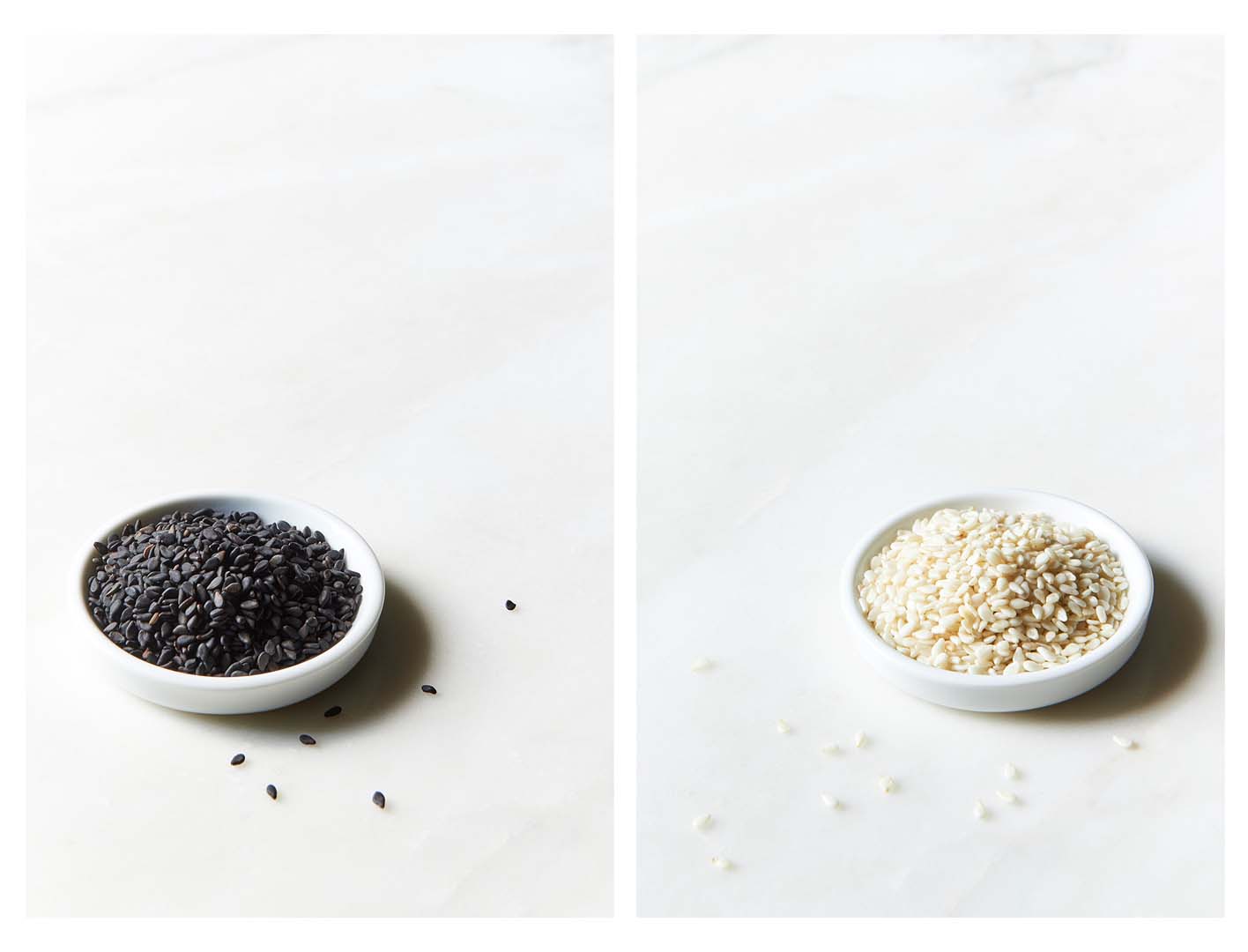
Sesame Seeds
These tiny flat oval edible oil-rich seeds come from the sesame plant. The largest producers of sesame seeds are China, India and Africa. Sesame seeds come in a variety of colors ranging from cream, yellow, red and black; with the white and black varieties being the most widely used. The famous phrase “open sesame” comes from observing the sesame pod which expands open as it matures.
Sesame seeds are used extensively in cuisines all over the world to add a rich nutty flavor and texture to breads, bagels, buns, muffins, and crackers; or as a garnish on stir-fries, sushi, salads, stir-fries, curries, and casseroles. Sesame seeds are used to make condiments such as Japanese gomasio, Egyption dukkah, and Indian Milakai Podi.
The pale white sesame seeds are more widely used in Western and Middle Eastern dishes, whereas the black sesame seeds seem to be favored by the Indians and Japanese.
Sesame seeds are one of the most versatile foods, lending themselves beautifully to sweet or savory flavorings. They are exquisite blended with honey and other sweeteners for cookies, biscuits slices and candies. Sweet sesame paste is exquisite as a filling in pastries and pies; and sesame seed butter or tahini is phenomenal in ice creams, puddings, and cakes, as well as a principle ingredient in the ever popular hummus.
Try slathering some tahini on a rice cake for a power snack. Tahini, lemon juice and garlic makes a sensational dip or salad dressing. Or try sprinkling some sesame seeds over steamed vegetables. I like to make a lot of raw sesame seed bars for nutritional snacks. Middle Eastern and Asian desserts use sesame seeds a lot. A good piece of Halvah (a mixture of sesame seeds and honey) is absolutely delicious; as is a good black sesame Japanese sesame ice cream. The ladies of ancient Babylon would eat this as a beauty elixir, and Roman soldiers believed it would promote strength for battle.
Sesame seeds are incredibly rich in calcium, iron, magnesium, manganese, copper, Vitamin B and E; as well as phytooestrogens such as lignans that regulate hormone levels in women, and have antioxidant and anti-cancer properties. They have also been shown to lower cholesterol and blood pressure; assist with heart and bone health; Sesame seeds are like flaxseeds, in that their nutrients are more easily available when ground up. Make some home made tahini and slather it on a vegetable stick every day as a snack and you are good to go!
Sesame seeds are available hulled and unhulled (sometimes called tan or dark). I always purchase them hulled, in order to get the goodness of the raw seed without the oxalates that render them difficult to digest. Un-hulled sesame seeds have a longer shelf life.
But all sesame seeds are prone to rancidity and should be stored in the fridge in a sealed glass container and consumed within a few months. Another important thing to mention about sesame seeds is that contain high amounts of phytic acid, which is an anti-nutrient which retards digestion.
They should always be soaked and dehydrated before consumption. This is why I always make my own tahini from soaked sesame seeds.
Those of you with food allergies, make sure you are individually tested for sesame seeds. Allergies to sesame seeds appear to be on the rise.
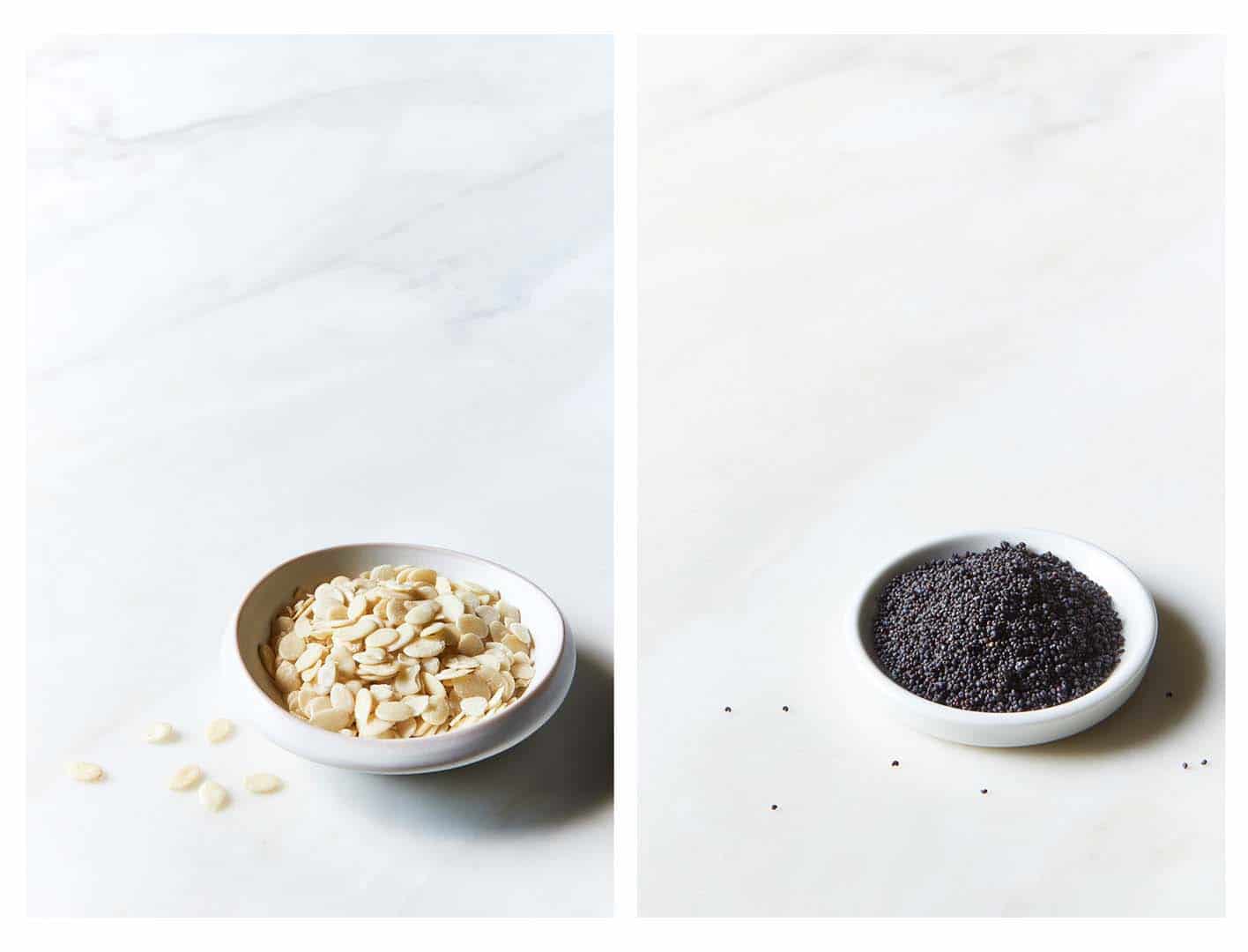
Poppy Seeds
These tiny hard grain-like oilseeds of the opium poppy are native to the Middle East, and are now grown in China, India and Afghanistan. Ripe poppy seeds for culinary use do not have the narcotic properties of the plant. They have a mild, sweet nutty flavor and are used whole or ground.
Poppy seeds come in a variety of colors such as the blue poppy seeds or European poppy seeds that we typically find on the tops of breads, bagels, and other baked goods. These poppy seeds are mainly produced in Holland and Canada. Holland holds the mantle for the highest quality poppy seeds. Australia does produce blue poppy seeds. But I am sorry to say, that the quality is nowhere near that of the Dutch variety.
White poppy seeds, sometimes referred to as Asian, Indian or Middle Eastern poppy seeds which are used in breads, pretzels, desserts and candies are also widely available. There is not a lot of difference in flavor and texture between the two varieties. It is really a matter of personal preference and availability. Blue poppy seeds are a little bit larger than white poppy seeds. But they are both tiny little kidney-shaped beads.
Poppy seeds have been used for medicinal purposes in ancient Egyptian cultures and there are many culinary uses that range from a thickening agent for stews and curries; as a spice, condiment and filling, or as a garnish.
Poppy seeds are incredibly tiny and I tend to only use them for aesthetics – to add a crunchy texture and appearance to baked goods. But having said that, they are yummy stir-fried in coconut oil and sprinkled on stir-fried vegetables. I don’t tend to use them as much as the other raw nuts and seeds. But wanted to include them in my list of favorite nuts and seeds as they do add a touch of decadence to baked treats.
The Germans and Eastern Europeans makes exquisite poppy seed pastes to fill their scrolls and pastries. They are absolutely divine! Try grinding poppy seeds into a paste with some butter, vanilla, cinnamon and honey. It makes a delightful natural filling for croissants.
I will say that poppy seeds are incredibly difficult to grind, and it is one of the only things I will not recommend grinding in a food processor. You can grind them in a spice grinder or coffee grinder after lightly toasting them. But you will get the best results if you soak them in boiling water for a few hours before grinding them with a mortar and pestle. Muscle up and you efforts will be worth it.


